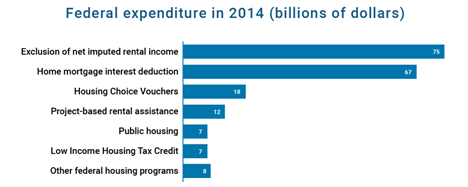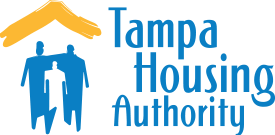Successful Public Housing Efforts Disprove Public Housing Myths

Public Housing Agencies: Myth vs. Reality
By Jerome Ryans, President & CEO Tampa Housing Authority
Public housing does not exist in a vacuum. Rather, it is integrated with its surrounding community through the combined efforts of government organizations, non-profits, private companies, and individual citizens. The most successful public housing efforts have the full participation of this entire list.
In order to gain that participation, the businesses and people in a community must buy into the belief that public housing works more often than not. This is where perception of public housing agencies (PHAs) matters, and where public housing myths can block the meaningful interaction that drives stable housing progress.
Let's look at some commonly held public housing agency myths and compare them to the reality of how public housing in American currently functions.
High Rises and Low Ambitions
Understandably, many social improvement issues vie for the attention of city and state residents: healthcare, education, poverty, crime, roads and transportation... Because housing is just one piece of the puzzle, many people harbor only a glancing comprehension of how public housing works in their locale. They hear the phrase "public housing," and the worst stereotypes can jump to mind: bleak towers riddled with gangs, drugs, and crime, in which people who live on welfare spend their days not working on the government's dime.
However, very little of this picture matches reality now-or even in the past. When this did become true for certain housing developments, the circumstances came with an entire socioeconomic context and history that led to poor living conditions.
You may feel guilty if this is what you imagined at first, but the myth is highly prevalent, even among fairly educated people. Keep reading to learn more about what "public housing" really means and how it works.
Myth #1: Public Housing = Urban Tower Projects
Both parts of this myth are untrue: that all public housing is urban, and that people using vouchers live in homogenous high rises. The truth is that a wide variety of successful public housing efforts exist. It is just as likely to be a single-family home in the suburbs as a large apartment complex in the city.
Why would it differ so much? Because the majority of people who obtain the help of public housing agencies do not live in buildings owned by the government. They choose from the same private rental market as people who do not employ public housing agencies. As long as a landlord accepts their housing voucher, they can rent a place. Some private landlords also enter into government contracts to make their properties eligible to receiving housing vouchers, which translates to a wider variety of housing structures than you might expect.
Presently, a portion of families resides in government-owned public housing; however, these households constitute merely approximately 23% of the overall population benefiting from government housing assistance.
Myth #2: Public Housing Agencies Only Serve the Most Poverty-Stricken People
One often overlooked aspect of applying for housing assistance: the median income of a region. A person qualifies for help based on how their income compares to the people and housing costs surrounding them. Assistance is based on context, not a flat dollar amount of income.
This means that, in more expensive regions like NYC, LA, or the Bay Area, people with stable jobs that pay more modestly - like teachers, food workers, or public servants - could still be part of successful public housing efforts. Even in less pricey areas, people who work steady minimum wage jobs qualify for some housing programs. Quite a different portrait from the myth of the "unemployed public housing resident."
Myth #3: Public Housing Breeds Crime and Lowers Property Value
Public housing in itself does not cause higher crime rates or lower property values. Rather, these are corollary circumstances based on systemic racism, segregation, and isolating lower income people historically in America.
For instance, many Black Americans left to reside in cities after "white flight" in the 1950s/1960s faced property values that were already sinking and crime rates that were already rising because of the drastic population and industry redistribution. Coupled with practices like redlining, in which loans were denied based on race, these populations had little choice but to make things work in a poorer area - a far cry from being the culprit for the social problems of poverty.
Myth #4: Only Renters Receive Housing Assistance, Not Homeowners
While PHAs very visibly provide assistance to renters, the reality is that homeowners receive even more financial support from the government in a less visible way: the tax form. Homeowners can claim a large tax deduction for their mortgages through the mortgage interest deduction, among others. A 2014 study showed that federal spending on this mortgage subsidy outweighed all the public housing assistance programs combined.

This is not a game of "Who deserves help more" - rather, we are simply dispelling the myth that homeowners do not receive any financial support while Section 8 renters sponge up federal dollars. Anybody renting or buying in America is likely subsidized by the government in some fashion.
Shifting Attitudes Toward Public Housing
Why is it so important to dispel these myths in the first place? When people harbor some of the more negative but untrue beliefs about public housing, they can assume a "Not in My Backyard" attitude. This can translate to very real consequences: voting down public housing laws, blocking supportive zoning or construction, and paradoxically enlivening the myth by cordoning public housing renters in the same areas.
Besides that, we have not mentioned the social and emotional bonds that break down when these judgments exist within a community. There are many merits to destigmatizing PHAs and all that they do. Looking beyond your assumptions to understand your neighbors and how they arrived where they are can help build bridges and help to lift all of us up.



